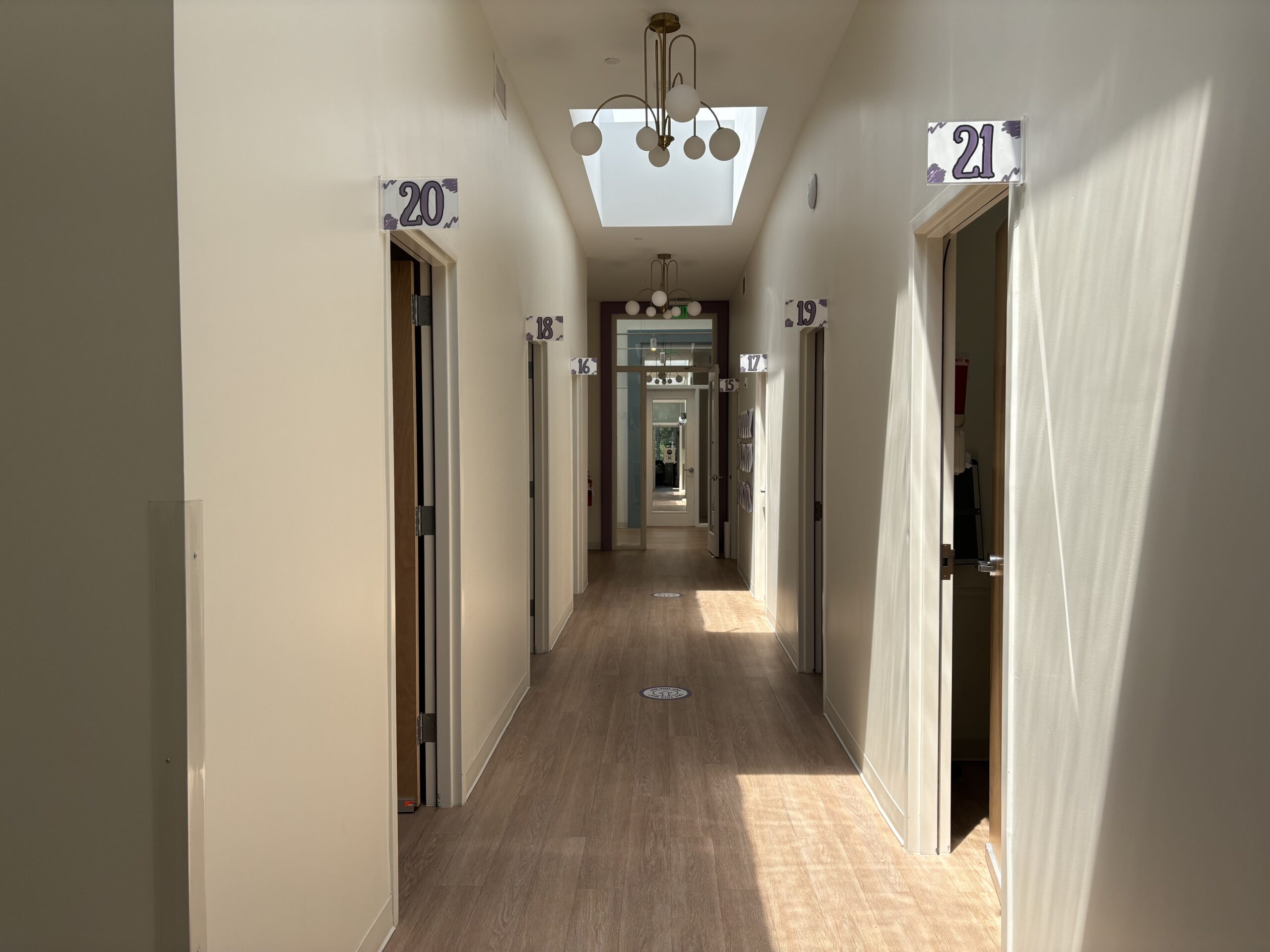
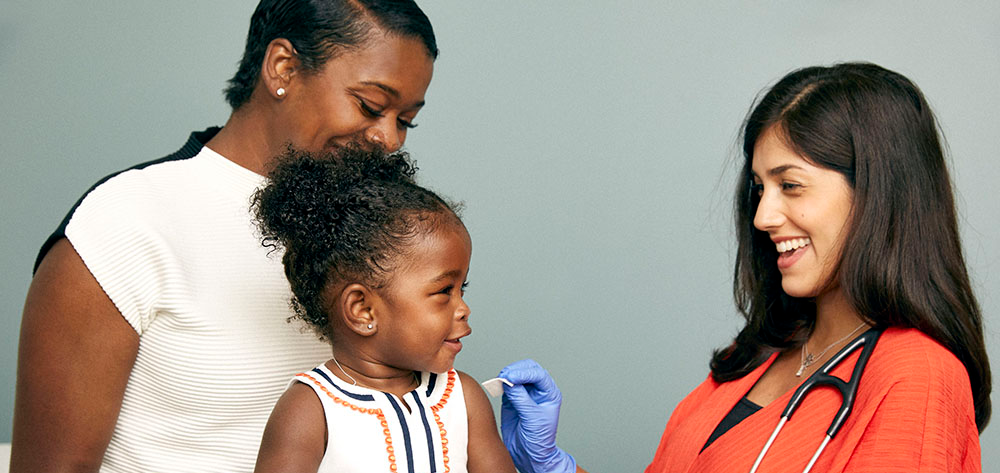

In clinics across the country, healthcare workers communicate daily with parents and caregivers about vaccine safety, shaping decisions around their children’s vaccination. To better prepare these workers with effective tools to navigate vaccination
conversations, it is crucial to understand the nature of these interactions and the most effective approaches.
RTI International (RTI) is leading a year-long effort to understand the dynamics influencing how childhood vaccine safety information is communicated and accepted within healthcare environments, particularly focusing on the interactions between families and healthcare professionals.
The findings from this research will support national initiatives to improve vaccine safety communication and advance the breadth of knowledge available regarding vaccine safety communication.
Disclaimer
This project is supported by the Centers for Disease Control and Prevention (CDC) of the U.S. Department of Health and Human Services as part of a project award totaling $2,770,000 with 100 percent funded by CDC/HHS. The contents of this website are those of the author(s) and so not necessarily represent the official view of, nor an endorsement, by CDC/HHS, or the U.S. government.
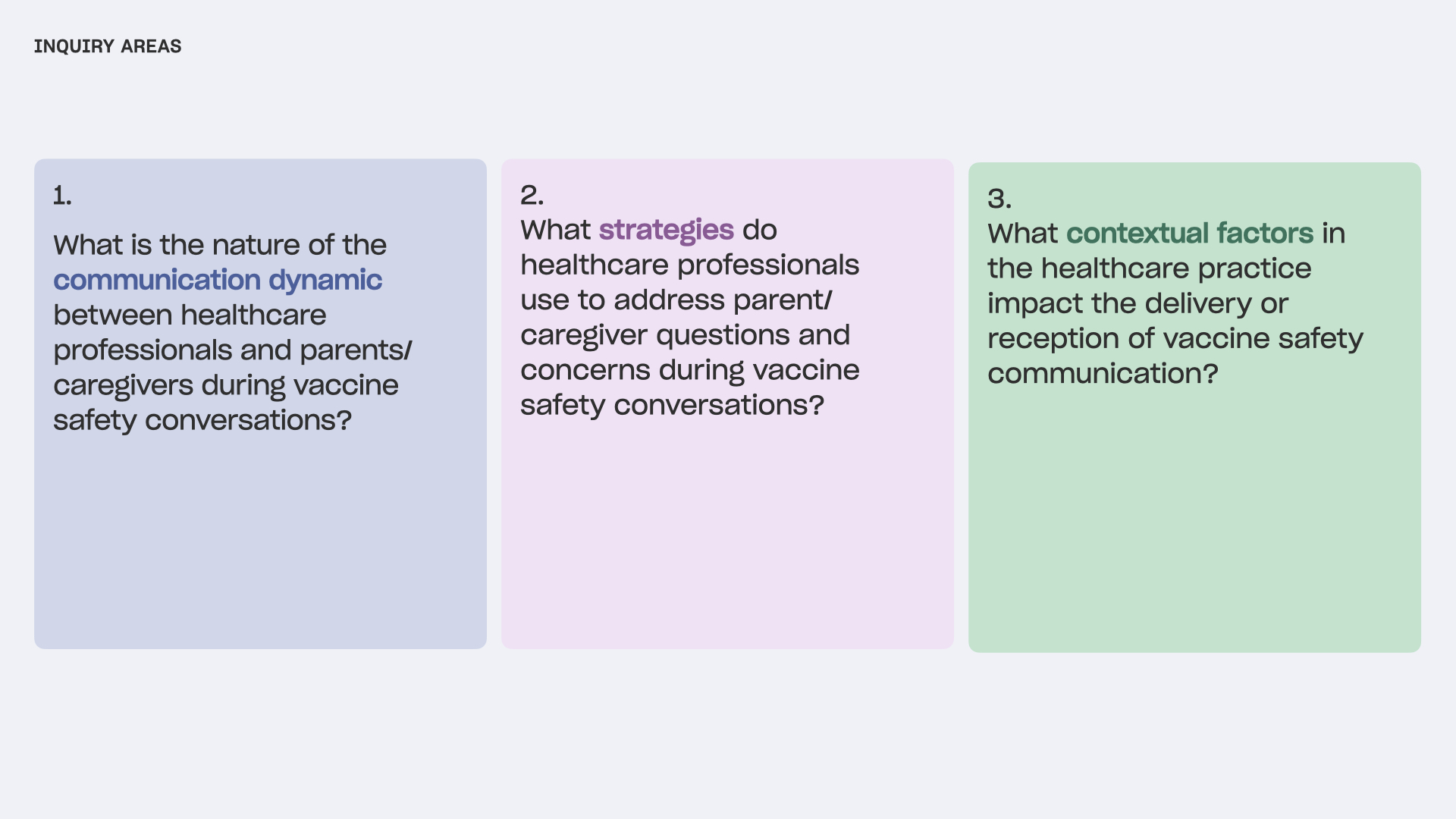
Appointments Observed
Interviews Conducted
This study is focused on:
Over the course of two months, the PPL team conducted an observational study on vaccine safety communication dynamics between pediatric healthcare professionals and parents/caregivers across the country. We conducted the study on-site at eight healthcare practice locations across the United States, speaking with healthcare professionals, healthcare practice staff, and parents and caregivers. The healthcare settings ranged from independent pediatric practices to hospital-affiliated pediatric clinics. We collected firsthand data from participants using a variety of methods, including the observation of patient appointments, walkthroughs of clinics, semi-structured interviews, and a survey.
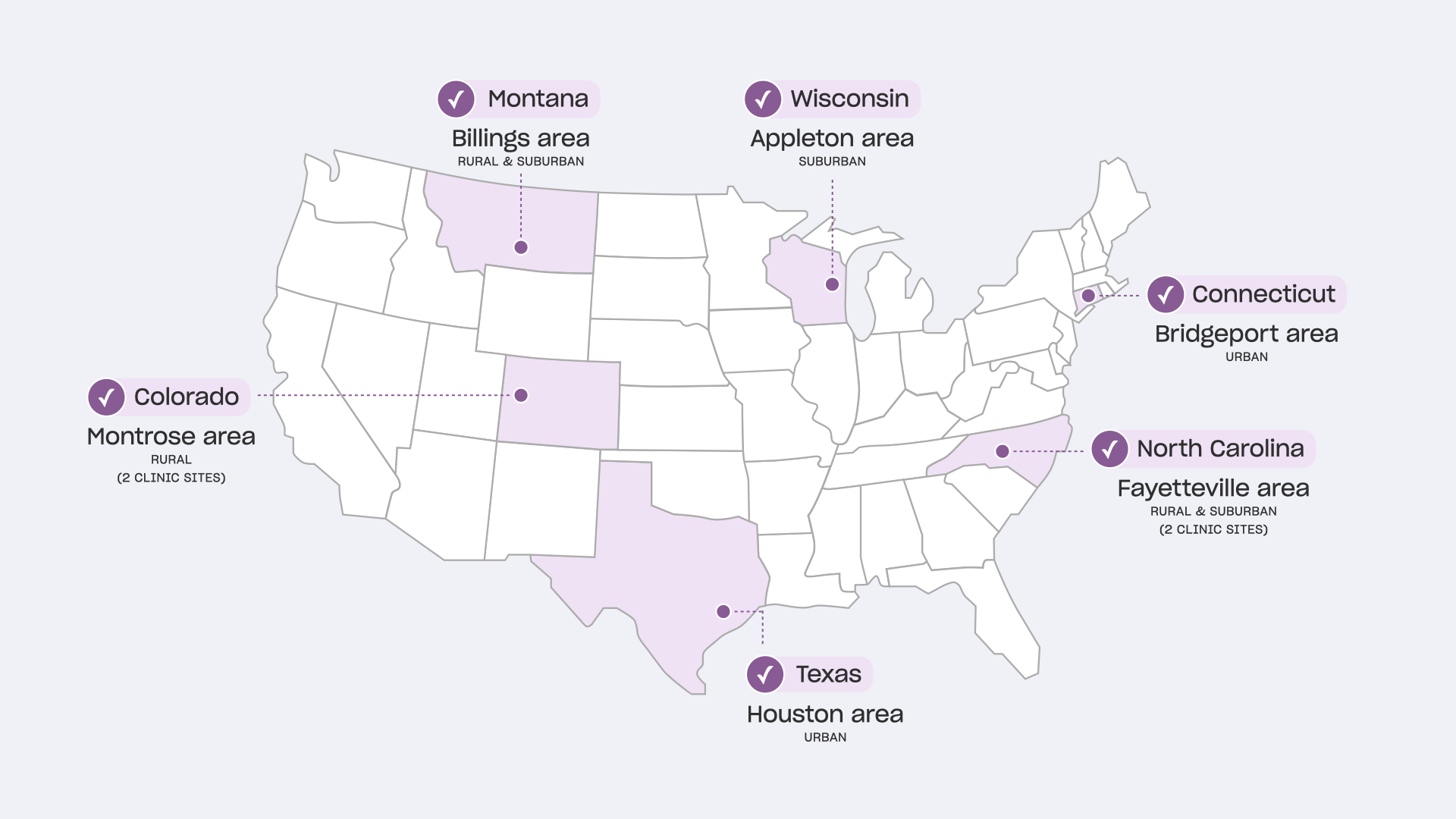
Research Locations
We conducted the study on-site at eight healthcare practice locations. We
prioritized practices with higher levels of vaccine hesitancy, diversity of patient population served, varying types of organizational structures, geographic locations, and population density levels.
Research Methods
Clinic Walkthroughs
We followed healthcare providers as they moved through their practice, including waiting rooms, exam rooms, and nurses’ stations. We asked them to explain their activities in each space and how they interact with the physical environment. If any vaccine-related materials were visible, we asked them to explain how staff and families interacted with them.
Vaccine Material Collection
At all clinics, we collected vaccine communication materials like vaccine information sheets, brochures, vaccination schedules, and other analog materials that aided families in understanding the vaccines their child might be receiving. Some practices also shared resources they provide to parents/caregivers who have vaccine hesitancy or concerns.
Survey
We administered a survey to participating parents/caregivers before their child’s appointment to gain a baseline understanding of their attitudes toward vaccines and vaccination.
Observation
With consent, we conducted contextual observations of interactions in exam rooms, waiting rooms, hallways, and clinical team workspaces. We recorded and observed live-streamed video of routine pediatric appointments with special attention to interactions related to vaccination. We did not observe the actual administration of vaccinations by nurses, which happened after the clinical conversations had ended.
Semi-Structured Interviews
We conducted semi-structured interviews with parents/caregivers and healthcare providers and staff following pediatric appointments to confirm and clarify the interactions and behaviors we observed during appointments. Through these conversations, we were able to understand their thought process and mindsets during the appointment and learn any contextual information about the relationship between the provider and family that might have contributed to the conversation dynamic.
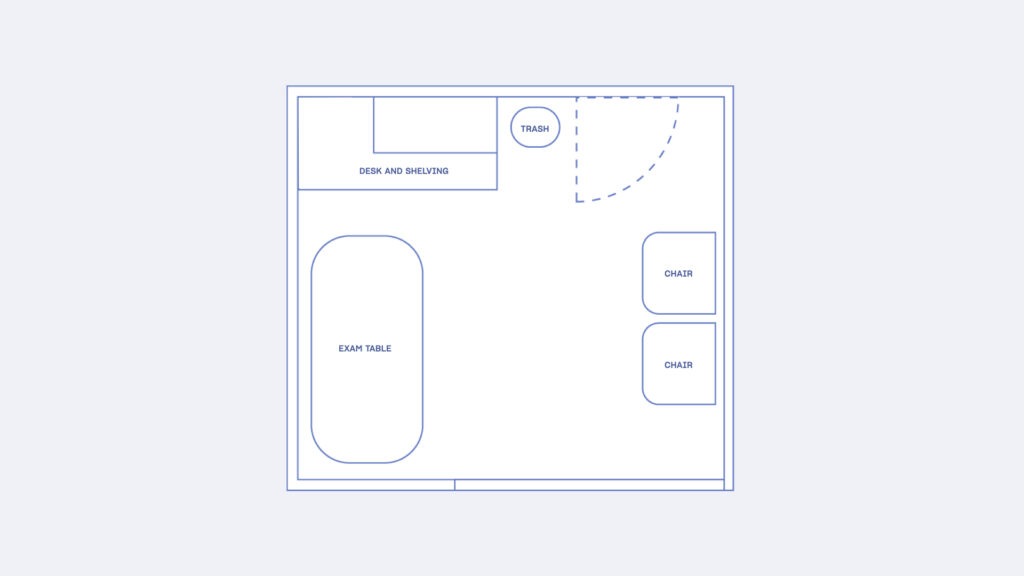
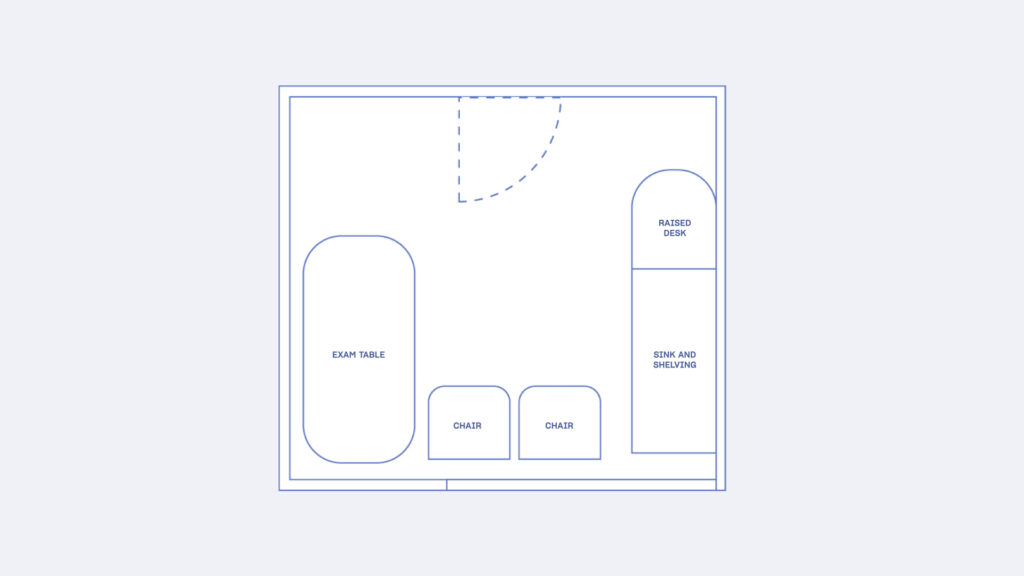
Exam Room Layouts
In exploring what contextual factors impact vaccine conversations, we observed the role of the exam room’s layout.
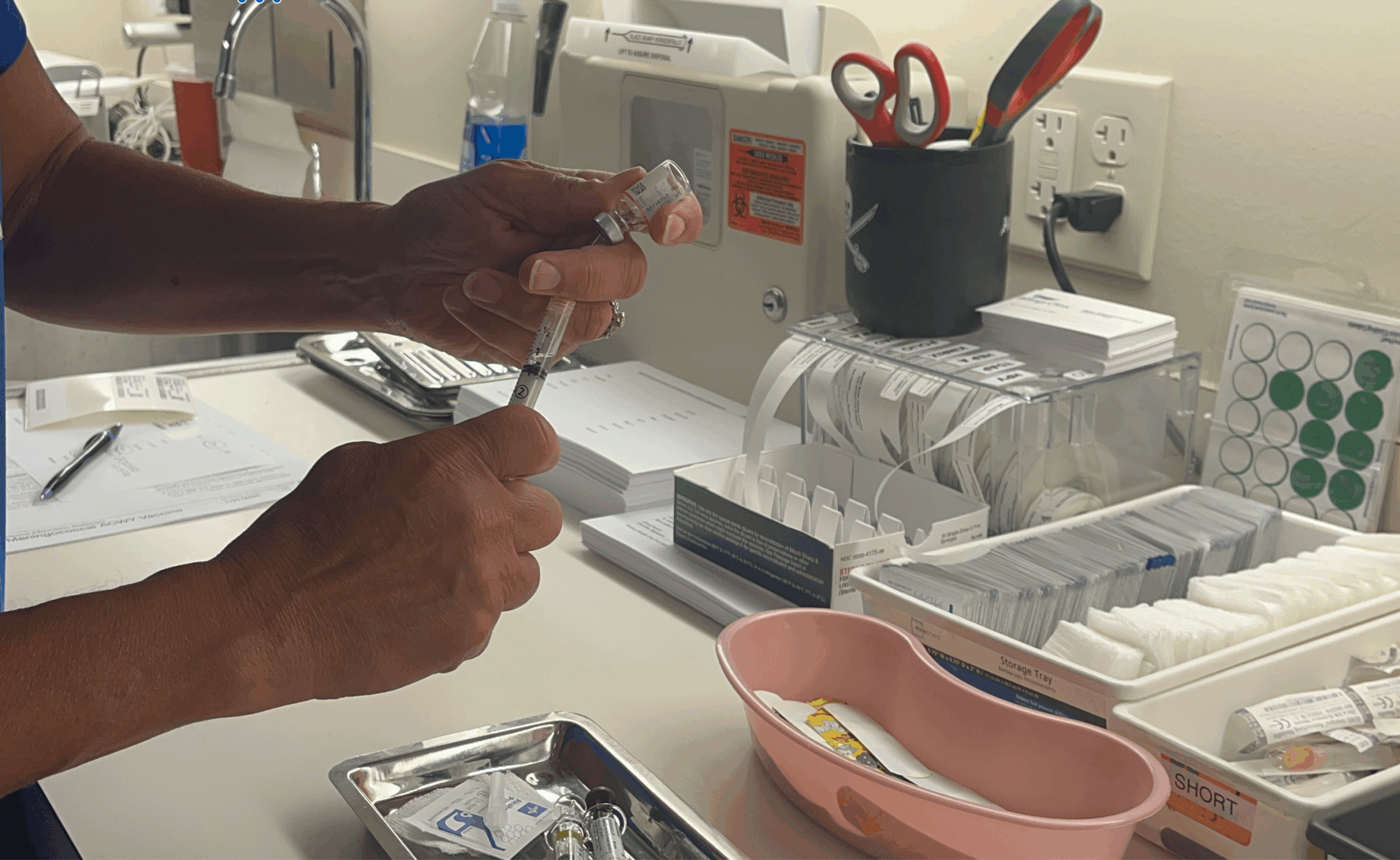
In the next phase of this project, we’ll synthesize what we heard during research and generate preliminary audience segmentations.
PPL is a tax-exempt 501(c)(3)
nonprofit organization.
info@publicpolicylab.org
+1 646 535 6535
20 Jay Street, Suite 203
Brooklyn, NY 11201
We'd love to hear more. Send us a note and we'll be in touch.
We're currently seeking applications for a Graduate Summer Intern. If interested, learn more about the role here.
To hear about future job announcements, follow us on Instagram, Twitter, Threads, and LinkedIn or subscribe to our newsletter.
Enter your email below to subscribe to our occasional newsletter.
Wondering what you’ve missed?
Check out our
The Public Policy Lab is a tax-exempt
501(c)(3) nonprofit organization.
Donate now to support our work; your
gift is tax-deductible as allowed by law.